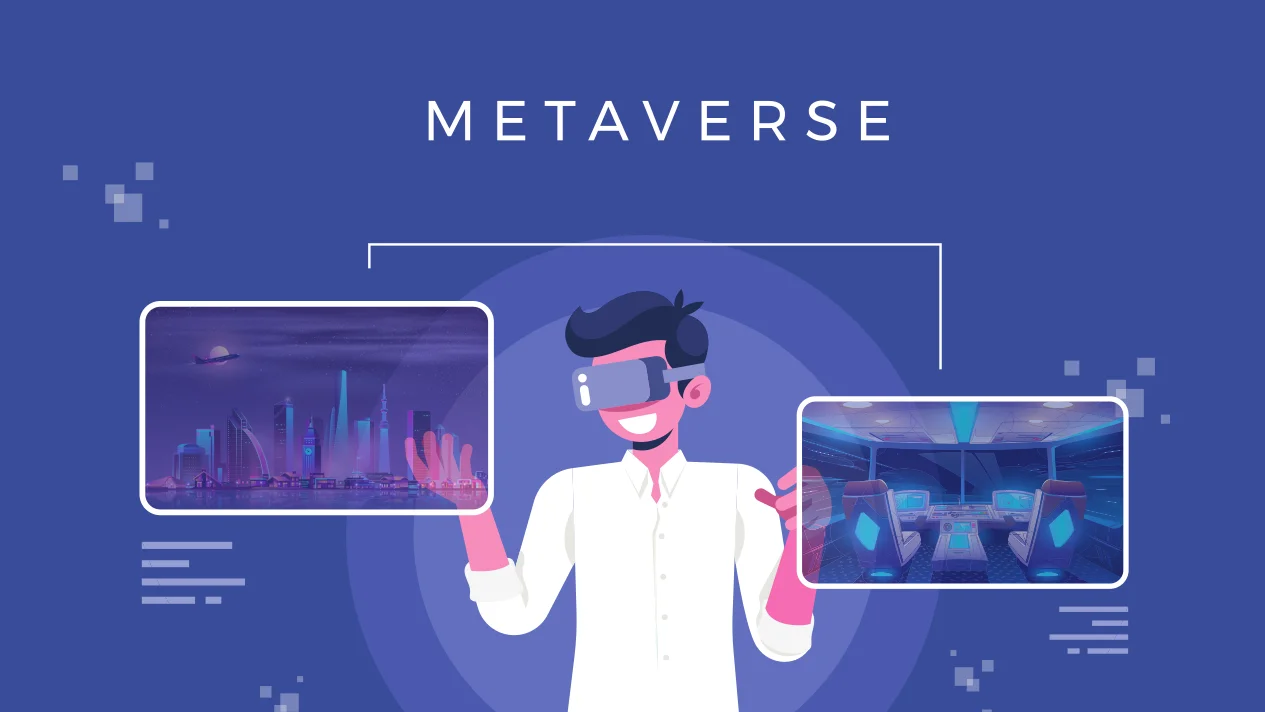
Although extended reality technologies are not new, how we interact with them has transformed in the last few years. The landscape of these innovations has become confusing and uncertain for many as businesses compete for supremacy in this space. What are the necessary technologies for metaverse development?
At its core, the Metaverse is defined by its immersive user experience, which would be impossible without AR and VR. The terms Metaverse and VR are frequently used interchangeably, but some distinctions exist. The Metaverse is all about linked virtual reality experiences. A single-player VR game is not part of the Metaverse, but a shared VR meeting is. The Metaverse may eventually expand beyond VR to include much more futuristic technologies.
Virtual fitting room technology is also gaining popularity to improve e-commerce experiences. By removing the barriers to online shopping, customers can select the best item for them without leaving the comfort of their own homes. The Metaverse can improve on this technology in the future by fully immersing you in a virtual representation of the store in VR.
However, the VR experience causes purchasing expensive equipment, such as a virtual reality headset, which is not the most cost-effective option for most people. Against this backdrop, augmented reality (AR) technology has the potential to become the primary driving force behind Metaverse’s development. According to Statista, 83.96% of the world’s population owns a smartphone, implying that AR capabilities could be available.
Although extended reality dominates the Metaverse, artificial intelligence is a critical technology that works behind the scenes to make the magic happen. Although AI is most useful for data calculations and predictions, it can also help improve algorithms that aid in tasks such as avatar creation, natural language processing, translation, and world generation. AI can also pay close attention to sensors that measure our bioelectrical and muscular patterns, improving how we interact in VR. AI can also contribute to more inclusive experiences by providing services such as image recognition for visually impaired users.
The Metaverse requires three-dimensional environments to be a truly immersive platform. Hundreds of 3D modeling tools are available to businesses interested in developing a Metaverse or VR-related product or service. Aside from creating objects from scratch in programs like Blender, sensors can now reconstruct objects in 3D. Sometimes, mobile devices with infrared depth scanners, such as the iPhone’s LiDAR sensor, can accomplish this. This can aid in the ‘digitization’ of objects for virtual environments.
Digitization of objects can also benefit manufacturing industries. For consumers, 3D technology can improve supply chain visibility by allowing them to see where a product comes from and how it’s processed.
Virtual avatars are the next best thing to fully digitize a human body for a virtual environment in VR. It is critical in this stage of the Metaverse to be able to properly create, animate, and use a virtual 3D avatar.
Edge computing, popular in commercial spaces, enables faster data transfer with fewer delays, required for high-quality immersive experiences in virtual areas.
When millions of people worldwide have virtual experiences, the cloud cannot handle all the processing power required to keep the system running. Distributed computing can bring that processing closer to each user, making the overall experience much more fluid.
Although the Metaverse is about connecting virtual experiences, networking with VR can consume massive amounts of data. 5G technology, one of the most recent mobile trends, has improved in recent years, providing the power required for real-time data transfers. People will connect to these AR/VR experiences from anywhere, not just in their homes, thanks to 5G.
Returning to edge computing, increased capacity via 5G means that VR rendering could be done on an edge device and streamed to your headset, potentially shrinking the size of VR headsets in the coming years to make them more comfortable for users.
Although the Metaverse arose in response to criticism of corporations’ control over our personal lives, this does not imply that connected virtual experiences are wrong. If we approach these technologies ethically and responsibly, we can find ways to genuinely assist consumers while increasing our businesses’ revenues.
These technologies are not intended to replace the real world but to expand our reach across the Internet to share experiences in places we previously could not. It is up to us to shape how metaverse development, so let us create the future we want to see. Besides, if you need advice on blockchain development services, contact SmartOSC.
Increased acceptance and knowledge sharing have aided the spontaneous growth of cryptocurrency over the last…
Blockchain can be intimidating to research, but attending cryptocurrency events is one of the best…
Blockchain has made inroads into all major industries and is also becoming a part of…
In recent years, blockchain lending solutions have grown in popularity as a way to earn…
The scalability trilemma is still one of the blockchain's most pressing issues. Here are some…
Many people are looking for ways to get involved in the crypto world as the…